Instead of just waiting, Ankara should actively take steps towards Beijing.
Instead of just waiting, Ankara should actively take steps towards Beijing.
By Özgür Altinbaş
Chinese retired naval colonel and academic Tian (Andy) Shichen spoke about the recent geopolitical developments. Tian, who is also the founding president of the Beijing-based Global Management Institute, made evaluations on the risks in the South China Sea and the consequences of tariffs on the global level. Touching on the relations between Türkiye and China, Tian said that Türkiye can mediate between the blocs while deepening its ties with China in areas such as de-dollarization efforts.
1. European Commission President Ursula von der Leyen said on April 29 that the Trump administration would shift its security focus to other regions. How do you see the possibility of the US turning towards Asia Pacific in the new era? What kind of geopolitical atmosphere awaits the South China Sea in the coming period?
It is neither strange nor unexpected that the United States is shifting its strategic focus toward the Asia-Pacific in the current era. In fact, this reflects a broader, long-term trend that has been unfolding for over a decade. The U.S. pivot to Asia, initiated during the Obama administration and sharpened during Trump’s first term, is likely to intensify further—regardless of changes in U.S. domestic politics—because it aligns with enduring strategic imperatives: countering China’s rise, securing vital trade routes, and maintaining influence in a region that is central to global economic growth.
This shift has already been reaffirmed by Trump in his second term and will likely deepen in the years ahead. U.S. policymakers increasingly recognize that China’s growing power and the dense web of commercial, diplomatic, and security relationships in East Asia demand sustained attention and engagement.
We are likely to see an expanded focus on the broader “Indo-Pacific” region. This means the U.S. will enhance its involvement not only in Northeast Asia, but also in South and Southeast Asia—strengthening ties with countries such as Vietnam, Indonesia, and India through arms sales, military training, and development assistance.
For the geopolitical dynamics in the SCS,
First, The South China Sea will remain a central arena in the U.S.-China strategic rivalry.
Under Trump’s second term, the United States is expected to maintain — and likely intensify — its military footprint in the region. This will include routine naval and aerial reconnaissance missions, freedom of navigation operations (FONOPs), and joint or unilateral military exercises, aimed at countering China’s growing influence and asserting U.S. commitment to regional allies and the principle of open sea lanes.
Second, The Philippines is likely to strengthen its alignment with the United States and adopt a more assertive posture.
Amid escalating tensions, Manila may pursue closer military and strategic cooperation with Washington, possibly allowing expanded U.S. access to its bases under the Enhanced Defense Cooperation Agreement (EDCA). The Philippines may also take more provocative actions in disputed areas, including joint patrols or assertive enforcement activities, heightening the risk of direct confrontations with China.
Third, U.S. pressure will not be limited to military means — economic and diplomatic tools will also remain in play.
In addition to military presence, Washington is likely to continue or even expand targeted sanctions against Chinese individuals, companies, and entities involved in militarizing the South China Sea or violating international norms. Diplomatic efforts to rally regional and global support for a “rules-based order” in maritime affairs may also intensify.
Finally, China will pursue active engagement with ASEAN to counterbalance U.S. containment efforts.
In response to mounting U.S. pressure, China is likely to deepen diplomatic outreach and economic ties with ASEAN member states, aiming to reduce regional dependence on the U.S. and mitigate alignment against Beijing. Efforts may include confidence-building measures in the South China Sea, advancing negotiations on the Code of Conduct (COC), and expanding bilateral and multilateral cooperation with other claimants. These steps are intended to project China as a stabilizing force and to dilute the impact of U.S.-led strategic encirclement.
2. How do the US administration’s “reciprocal” tariffs affect the US relationship with China? How is China preparing for this? These tariffs have caused tension between the US and the EU. How will this affect relations between China and the EU?
The U.S. administration’s implementation of “reciprocal” tariffs under President Trump’s second term has significantly strained U.S.-China relations. The Chinese government has consistently condemned the U.S.’s reciprocal tariffs, viewing them as violations of World Trade Organization (WTO) rules and manifestations of unilateralism and protectionism. The Ministry of Commerce (MOFCOM) emphasized that such tariffs disrupt the global supply chain and introduce significant uncertainties into international trade. MOFCOM urged the U.S. to cease using tariffs as coercive tools and to resolve trade disputes through equal consultations. Against this backdrop, the deterioration of Sino-US relations will not only be limited to the areas of trade and investment, but is spreading to multiple levels such as security, science and technology, cultural exchanges, climate cooperation and global governance.
China is adopting a multifaceted strategy to navigate the escalating tariff war initiated by the U.S. under President Trump’s second term. This approach encompasses economic retaliation, selective concessions, strategic diplomacy, and internal economic adjustments.
First, Retaliatory Tariffs and Targeted Exemptions
In direct response to the U.S. imposing a 145% tariff on Chinese imports, China has levied a 125% tariff on most U.S. goods. To mitigate domestic economic impacts, Beijing has introduced selective exemptions for critical imports such as pharmaceuticals, semiconductors, and ethane. This strategy aims to alleviate pressure on key industries while maintaining a firm stance against U.S. trade policies.
Second, Economic Resilience and Strategic Stimulus
Despite facing significant economic challenges, including a contraction in factory activity and potential job losses, China is refraining from immediate large-scale stimulus measures. Instead, it is advancing existing stimulus plans and projecting confidence in its economic stability. This measured approach is intended to preserve fiscal resources and signal resilience amid external pressures.
Third, Diplomatic Engagement and Conditional Negotiations
While publicly condemning U.S. tariffs as unilateral and coercive, China has indicated a conditional openness to trade negotiations. Beijing emphasizes that any dialogue must be based on equality and mutual respect and has denied claims of ongoing high-level talks. This stance reflects a strategic balance between domestic political considerations and the potential benefits of de-escalating trade tensions.
Fourth, Diversification of Trade Partnerships
In response to the trade conflict, China is actively seeking to diversify its trade relationships beyond the U.S. Efforts include strengthening ties with the European Union and other global partners, as well as promoting initiatives like the Belt and Road Initiative. These moves aim to reduce reliance on U.S. markets and build a more resilient trade network.
Fifth, Legal Countermeasures and Regulatory Tools
China has enacted and enforced laws such as the Anti-Foreign Sanctions Law to counteract foreign sanctions and assert its legal stance in international trade disputes. These legal frameworks provide mechanisms for China to impose countersanctions and protect its national interests in the face of external economic pressures.
In summary, China’s response to the U.S.-imposed tariffs is characterized by a combination of economic countermeasures, strategic diplomacy, and efforts to bolster domestic resilience. While maintaining a firm stance against what it perceives as unjust trade practices, China is also exploring avenues to mitigate the impact on its economy and engage in constructive dialogue under favorable conditions.
The growing trade tensions between the U.S. and the EU—particularly in the context of the U.S.’s aggressive tariff policies under Trump’s second term—create both challenges and opportunities for China-EU relations. Here’s a nuanced breakdown of how this may play out:
First, Strategic Opportunity for China–EU Cooperation
As U.S.-EU trade frictions increase, the EU may look to diversify its economic partnerships. This presents an opportunity for China to position itself as a more stable, rules-based trading partner. With shared interests in multilateralism, climate change, and global governance reform, China and the EU could strengthen cooperation in:
- Trade and Investment: Reviving and possibly ratifying the stalled Comprehensive Agreement on Investment (CAI) could gain momentum.
- Green Transition: Joint initiatives on renewable energy, EVs, and sustainable finance could become new pillars of cooperation.
- Multilateralism: Both sides may reinforce collaboration within the WTO, the UN, and G20 to push back against U.S. unilateralism.
Second, Caution and Strategic Autonomy on the EU Side
While China may seek closer ties, the EU is unlikely to align itself fully with China against the U.S. Instead, Brussels is more likely to pursue a “strategic autonomy” approach:
- Balancing Act: The EU will seek to protect its own interests without being drawn into a binary choice between Washington and Beijing.
- Values vs. Interests Dilemma: While the EU shares some values with the U.S., economic interests with China are substantial, and European leaders may try to keep those tracks separate.
- Supply Chain Hedging: The EU may deepen trade with China while also reinforcing its own industrial base to reduce over-dependence on any single partner.
Third, Potential Friction Points in China–EU Relations
Even as the U.S. alienates Europe, China–EU relations are not without their own tensions:
- Human Rights and Governance: Concerns over Xinjiang, Hong Kong, and data privacy continue to shape EU perceptions of China.
- Economic Reciprocity: The EU is pushing for more balanced market access, especially in tech, green industries, and services.
- Geopolitical Pressures: Ongoing issues in the Indo-Pacific, China’s alignment with Russia, and global security dynamics may still limit the full potential of the China–EU relationship.
Conclusion: A Window of Opportunity, not a Strategic Realignment
While the rift between the U.S. and the EU opens a window for China to improve its ties with Europe, it is unlikely to lead to a full strategic realignment. The most probable outcome is selective deepening of cooperation—particularly in trade, climate, and global governance—paired with continued European efforts to maintain strategic autonomy from both Washington and Beijing.
3. How do you see the potential and opportunities between Türkiye and China in light of current global developments?
The potential for enhanced cooperation between Türkiye and China is significant, especially in light of current global developments. China and Türkiye, as two ancient civilizations with illustrious histories, have both demonstrated resilience and innovation across millennia. Today, both nations are pursuing national rejuvenation as core objectives—China through its “Chinese Dream” and Türkiye via its vision of a resurgent regional and global role. This shared ambition creates a natural foundation for cooperation, enabling mutual support in achieving strategic autonomy, technological advancement, and cultural revitalization. By leveraging their historical legacies and complementary strengths, the two countries can redefine their partnership as a bridge between Eastern and Western civilizations. In this new era, China and Türkiye share a common aspiration for development and revitalization. To achieve these national goals, the two countries should deepen mutual support and cooperation.
As a NATO member and a nation uniquely positioned at the crossroads of Europe and Asia, Türkiye enjoys a strategic geographic and geopolitical advantage. This dual identity enables Türkiye to project influence and mobilize resources across both continents. However, Türkiye’s full potential remains constrained by competing pressures from traditional alliances and emerging multipolar dynamics. China, with its emphasis on non-aligned cooperation and economic diplomacy, can support Türkiye in balancing these pressures while unlocking opportunities in infrastructure, technology, and energy. A strengthened Sino-Turkish partnership would amplify Ankara’s role as a critical nexus for Eurasian connectivity, rather than limiting it to a binary “East vs. West” framework.
Looking ahead, there is strong potential for aligning China’s Belt and Road Initiative (BRI) with Türkiye’s Middle Corridor initiative (also known as the Trans-Caspian International Transport Route, or TITR). Coordinated development of these initiatives can enhance regional connectivity and trade. Beyond infrastructure, both sides can deepen cooperation under multilateral frameworks such as BRICS, the Shanghai Cooperation Organization, and initiatives representing the Global South. These platforms offer new avenues for collaboration on economic, technological, and cultural fronts.
Amid the intensifying strategic competition between the U.S. and China, Türkiye faces the challenge of balancing its relationships. While Türkiye has historically pursued a “balanced” foreign policy amid U.S.-China tensions, the intensifying strategic competition—particularly under a potential Trump administration prioritizing unilateralism and transactional diplomacy—demands clearer strategic calculus. Overreliance on hedging risks diminishing Türkiye’s agency; neither Washington nor Beijing will indefinitely tolerate ambiguity from a partner of Türkiye’s significance. China respects Türkiye’s sovereignty and does not seek to force alignment, but Ankara’s long-term interests are better served by prioritizing partnerships that align with its developmental goals and strategic autonomy. By positioning itself as a stabilizing force advocating for multipolarity, Türkiye could mediate between blocs while deepening ties with China in areas like renewable energy, defense technology, and de-dollarization efforts.







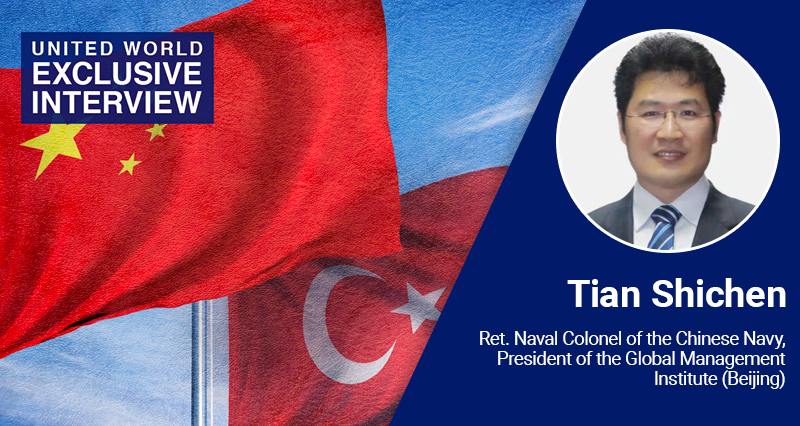



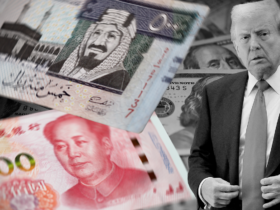
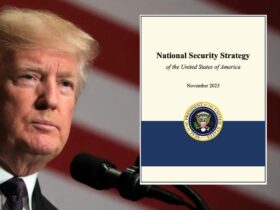
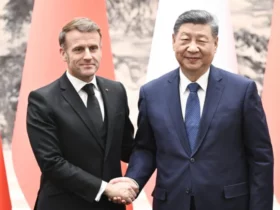


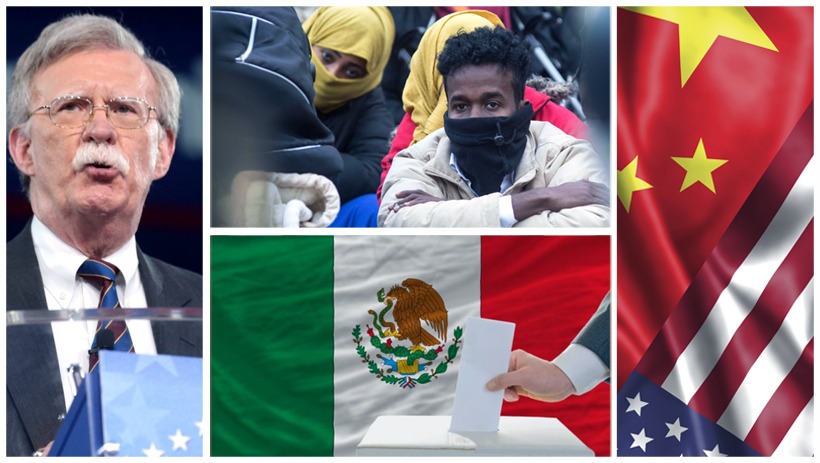
Leave a Reply